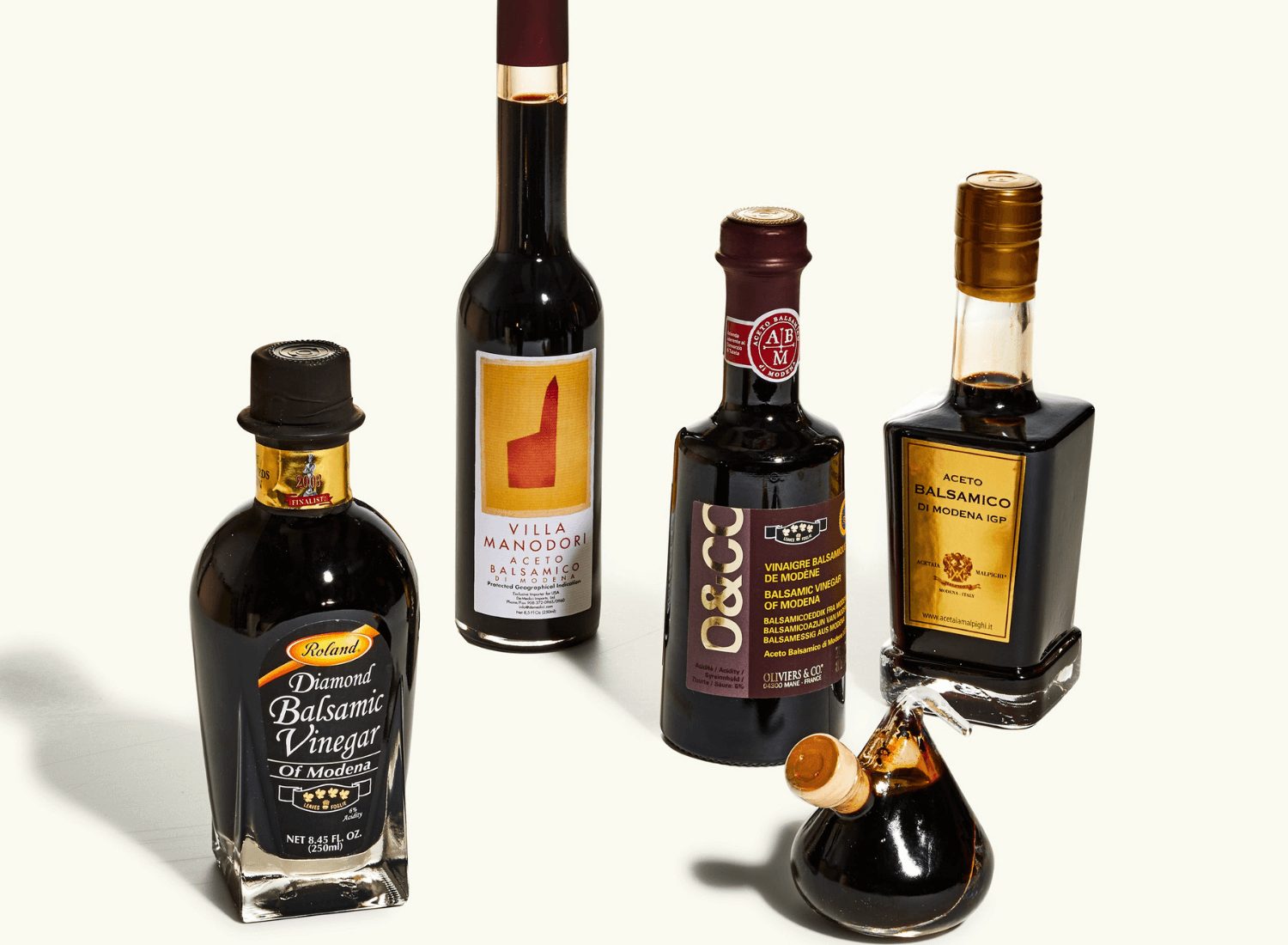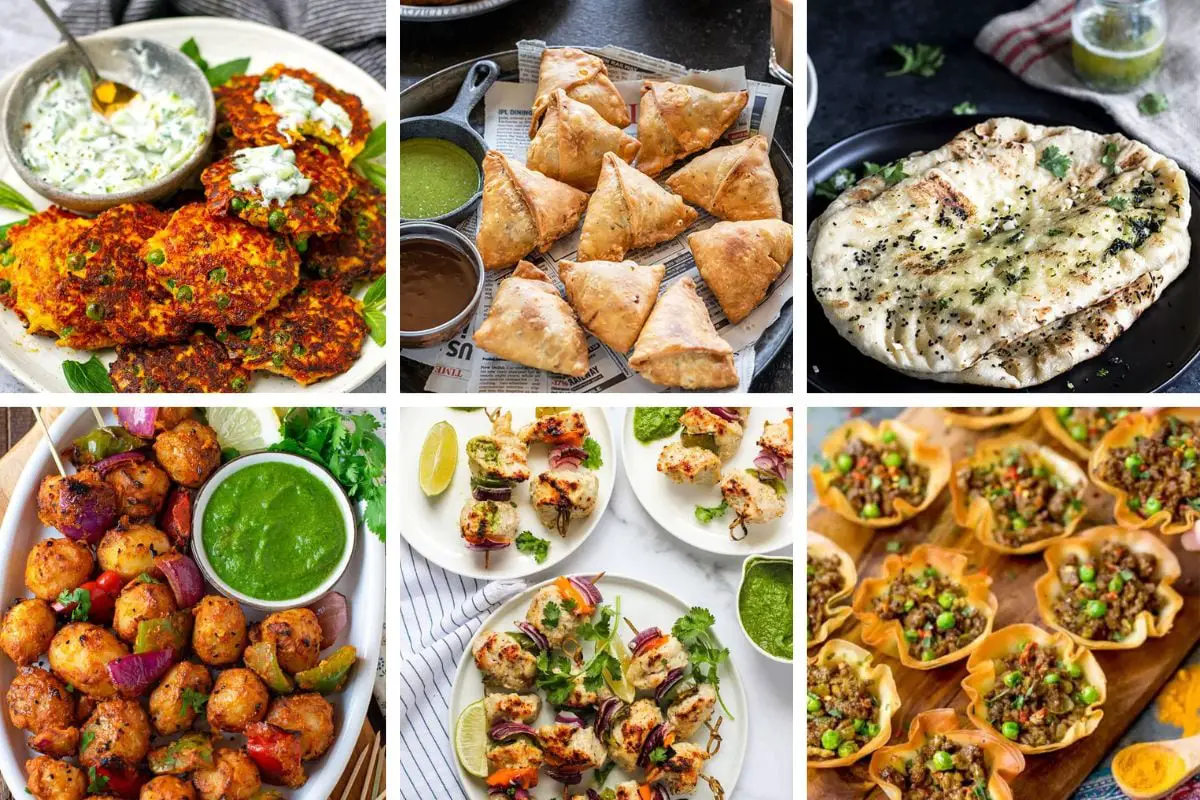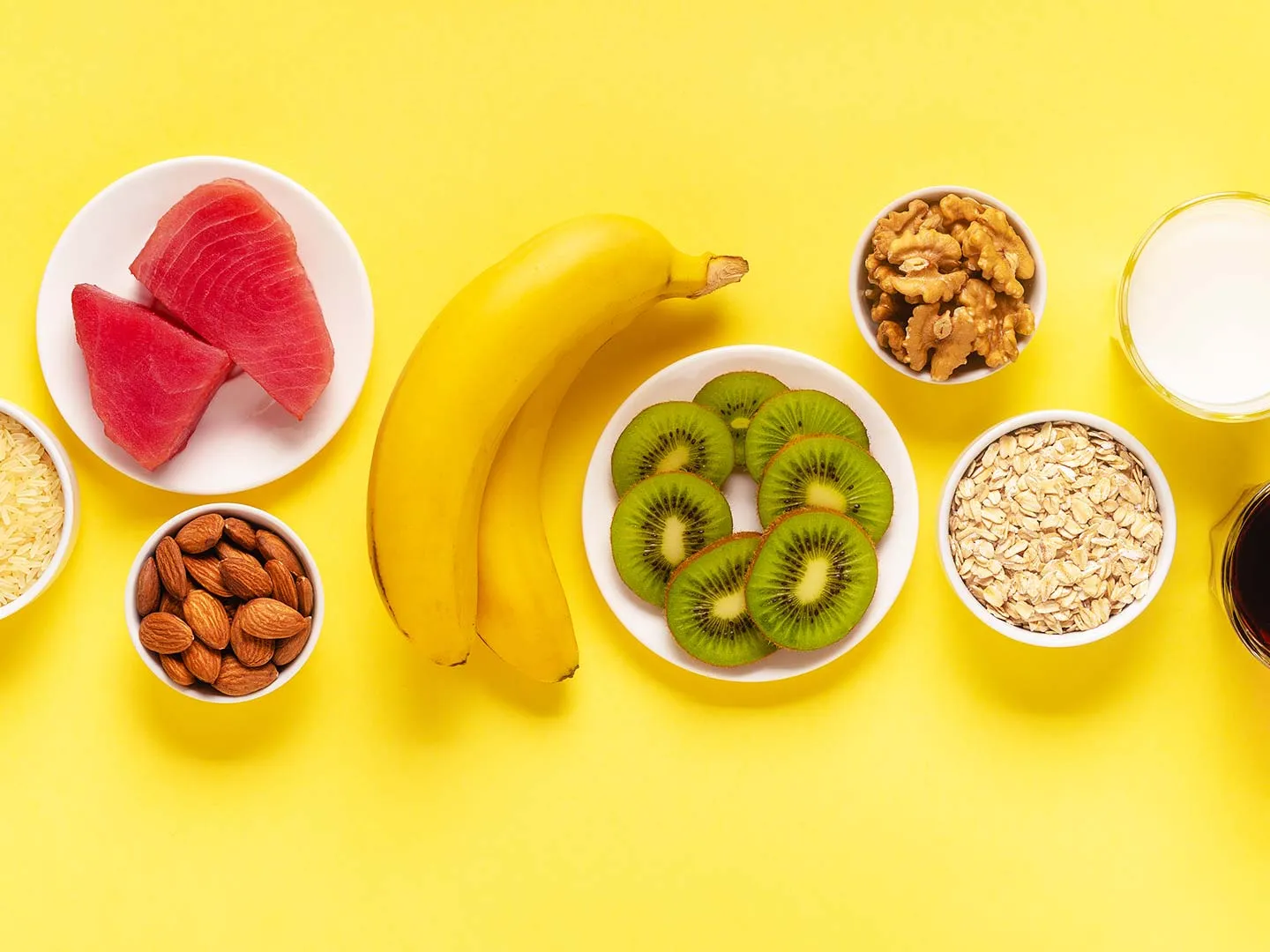Croatia is full of multicultural recipes that bring to mind the flavors of childhood, the aroma of grandma’s kitchen, and strong hands that have grown fragile with age as they roll out the dough. These recipes are everywhere, from Slavonia and Baranja to Zagorje and Mei murje to Istria and Dalmatia.
40 Best Desserts You Must Try Out in Croatian
1. Knedle sa Šljivama (Plum Dumplings)
One of the favorite homemade desserts is baked potato dough encased in just-picked delicious plums, which you may often eat around the end of summer and the start of fall.
Plump dumplings are prepared by being boiled in salted water, fried in lard, and then dusted with sugar and breadcrumbs. They are frequently cooked with apricots or cottage cheese as well.
2. Salenjaci (Lard Puff Pastry)
Due to one of their key ingredients, lard, these jam-filled cookies/cakes are also known as Croatian pork fat croissants. Salenjak is a cake with a thousand layers because the dough is folded four times. When made with margarine, salenjaci is just as good and flakes as neatly. They are most frequently made at pig slaughter when the lard is fresh and available to everyone.
3. Kroštule (Deep Fried Dough)
Krotule, a traditional Dalmatian and Istrian food, are crispy snacks made with egg, sugar, and flour, frequently with the grated rind of lemons or oranges, giving them a pleasantly refreshing scent. They are typically produced in February during the carnival. Krutulas are made with a quick-to-prepare dough shaped into knots, deep-fried, and then dusted with sugar while still warm.
4. Orahnjača and Makovnjača (Walnut or Poppy Seed Rolls)
For Christmas, Easter, or other holidays, yeast dough rolls called orahnjaa and makovnjaa are created. Makovnjaa is filled with poppy seeds and raisins steeped in rum, while orahnjaa is filled with crushed walnuts, milk, and sugar. These rolls are delicious, fragrant, and—best—relatively what’s simple to make, even for novices.
5. Rožata (Egg Pudding with Caramel)
Traditional Dalmatian desserts like flan or crème caramel use roata. It is an egg cream with caramel that is produced with only a few basic ingredients, including milk, eggs, sugar, and a rose liqueur called Rosalin or Rozulin, which gives the dish its distinctive flavor and aroma and its name.
6. Skradinska Torta (Skradin Cake)
In addition to various amounts of orange and lemon zest, rose liqueur, maraschino, cinnamon, and vanilla, skradin cake is made with walnuts, almonds, eggs, and chocolate. It’s best served with a glass of Ambra Prosecco and is always wrapped in chocolate and embellished with almonds or walnuts.
7. Međimurska Gibanica (Međimurje Layered Cake)
One of northern Croatia’s most well-known sweets is meimurska gibanica. This dish’s distinctive flavor and moistness are provided by at least four layers of stretched dough and as many as four different fillings. It incorporates the flavors of cheese, apples, walnuts, and poppy seeds. Meimurje gibanica illustrates how readily accessible components can be creatively combined to produce the most aesthetically pleasing results.
8. Samoborske Kremšnite (Vanilla Slice or Custard Slice)
The Croatian dessert known as kremnite originated in the little town of Samobor, located approximately 20 kilometers from Zagreb, the country’s capital. The cream, made from flour cooked with eggs, milk, and sugar, has to be similar in thickness to fresh pudding, which takes between 12 and 15 minutes of vigorous whisking. They are made of cream and layers of puff pastry on top and bottom lined with whipped cream. The puff pastry stays perfectly crispy.
9. Fritule (Fritters)
These deep-fried, crispy treats are quite easy to make at home but are delectable at street kiosks, where you can buy them on your way back from a walk or during festivals. They are made with flour, eggs, dry yeast, warm water, milk, or yogurt, frequently combined with rum-soaked raisins, lemon, or apples. They used to be eaten with sugar sprinkled on top, but nowadays, a variety of syrups, including chocolate, caramel, and forest fruit syrups, are used.
10. Zlevanka (Sweet Corn Pie)
Zagorje, Meimurje, and Podravina are known for their traditional northern Croatian dessert known as zlevanka. The only component in zlevanka, which varies based on the region of the country and may occasionally include wheat flour or semolina, is corn flour. Zlevanka can be prepared salty but is typically baked sweet with sweetened milk. It is stated that a true zlevanka is produced without measuring and that your heart should guide your hand.
11. Croatian Cherry Strudel
Strudel cooked from scratch is god-food. Although it has a crispy outside, the interior is so stuffed with a luscious filling that it is impossible to say “no” or “enough.”
One of the most adaptable Croatian desserts is the strudel. It is a true staple of the Croatian table because it is packed with fruit, nuts, and even savory cheese. Of course, the one with freshly produced filo dough is the greatest. This dessert is so excellent because of the tartness and meatiness of the cherries. Apart from a little sugar, they provide so much flavor and texture that no more seasoning is required.
12. Breskvice (Croatian Peach-shaped Cookies)
Breskvice always steals the show when Croatian Christmas cookies appear in December. They are so strikingly similar to the fruit that you can only stare in awe. They have a creamy chocolate filling and are buttery. You then taste the sour tones of the plum marmalade as they dissolve in your mouth.
13. Dalmatinski Rafioli (Ravioli-shaped Cookies)
Christenings, weddings, and other religious celebrations revolve around them. And each home is proud of its own distinctive recipe. A myth concerning a Rafioli family member’s daughter is the source of the name trogirski rafioli. She spent her time baking while imprisoned in the Kamerlengo tower until the knight freed her. Everything went smoothly, and they rode off into the sunset, but she continued to make rafioli as a thank-you gift.
14. Princes Krafne (Croatian Cream Puffs)
An exact translation of this Croatian cake would be a princess’s doughnut since the word “krafna” in Croatian means “doughnut.” They are our take on the choux pastry that goes into making profiteroles and éclairs. Because of their poise and grace, we frequently refer to them as princeze. We feel extremely blessed when they are served, typically at a birthday party.
15. Pinca (Croatian Sweet Bread)
The first pinca was consumed along Croatia’s shoreline. However, most of the nation now savors this aromatic bread on Easter morning. The eggs—an enduring symbol of spring and Easter—are the focus of Pinca. To give the dough its gorgeous brown finish, egg wash is applied after it has been supplemented with eggs. The Easter eggs are given a place to sit on Pinca thanks to a three-point mark cut into it.
16. Splitska Torta (Cake from Split)
Splitska torta combines all of the flavors and textures of Dalmatia. When you’re far away, this dessert will stop your longing for the Croatian seaside. They claim that foraging for your own figs and almonds yields the greatest results. Almonds in the light meringue bring out their mellow side when combined with them. The cake then starts singing a klapa tune as the orange buttercream takes over.
17. Ledeni Vjetar (Icy Wind Cake)
This elegant cake is the birthday party king or queen throughout Croatia since it is as light and pleasant as the wind. Few people do, however, try to create it at home. Preparing layers of smooth meringue, buttercream, fruit, and whipped cream takes hours. Furthermore, assembling them into a stunning shape requires good pastry abilities. Icy wind is a more streamlined form of the Spanish wind torte, its baroque forebear.
18. Kuglof (Bundt Cake)
Kuglof is a bundt cake prepared in a molded cake pan with ribs. This yeast-based cake resembles a giant doughnut and is a traditional Croatian holiday dish.
19. Dubrovacka Torta (Dubrovnik’s Cake)
Chocolate, almonds, and oranges are the key ingredients. This dessert should be ordered after you’ve climbed the Dubrovnik city walls and sat in a café for refreshments while gazing down at sea and all the old buildings below.
20. Hrapocusa (Cake of Brac)
The women of hamlet were inspired to develop a recipe for a cake that resembles Dol stone to extol the rustic beauty of Dol. The dense sponge cake at the bottom of this Croatian walnut cake is produced with flour, egg yolks, some egg whites, lots of walnuts, and perhaps some lemon zest. The egg whites, sugar, and nuts make up the top layer.
21. Harubica (Carob Cake)
The delicacy called harubica, made of carob, is one of Korcula’s most mouthwatering delicacies. Carob, a substitute for cocoa from the carob tree, is available as carob powder or carob chips, just like chocolate chips. The traditional form of Korcula’s carob cake is a cupcake with a dollop of orange jam.
22. Imotski Cake (Almond Lattice Cake)
This almond cake, which has a thin latticed pie crust on top and a filling of almonds, orange, lemon, and cinnamon, is from the unassuming village of Imotski. In addition to its mouthwatering symphony of tastes, Imotski cake is acclaimed as the queen of all Croatian desserts since the pie crust is pinched high in points all around the cake to give it the appearance of a crown.
23. Rapska Torta (Rab Cake)
This lovely Croatian dish is baked in a spiral on top of a thin, crispy pie crust and has a marzipan-like filling made of almonds, maraschino liqueur, lemons, and oranges.
24. Cukarini
Like harubica, a traditional dessert from Korcula, cukarini are sweet, crunchy cookies. Ammonium bicarbonate, comparable to baking powder, is included in the original recipe’s buttery cookie batter to give cukarini a crumbly and soft feel. For a light citrus flavor, more lemon zest is also added.
25. Korcula’s Spomilje (Almond Meringue)
A meringue-like confection with almonds on top is made using egg whites, sugar, and other ingredients. It is so well-liked that numerous Croatian brochures and travel guides recommend it.
26. Blato’s Drowning Men
The Moreska sword dance originated in the small, charming village of Blato on the island of Korcula, where Blato’s drowning men are a traditional sweet treat or cookie. When you need a boost of sweetness in your day, these crisp cookies with sugar and toasted almonds or walnuts are perfect!
27. Paprenjaci (Black Pepper Cookies)
Croatian for “pepper,” paprenjaci (black pepper biscuits) get their name from the pepper that goes into the batter before baking. Walnuts, sugar, honey, and cinnamon are among the other primary components of paprenjaci, in addition to pepper. Chefs decorate them with intriguing patterns like leaves, hearts, and crosses.
28. Grandfather’s Mustache
One of the most intriguing-looking Croatian desserts is this one. Roll up the two sides of a dough resembling a strudel, spread apricot jam over it, sprinkle walnuts on top, and then cover it with melted chocolate. And you sport your grandfather’s mustache! The pastry gets its name because it looks like an old man’s mustache when rolling the two sides into a spiral.
29. Lumblija
Lumblija is a cake that resembles bread stuffed with raisins and almonds. It is then topped with sugar and sweet grape syrup, or varenik. It has its roots in the Napoleonic era.
30. Pogaca Cake
Actually, pogaca cake is more similar to a sweet Croatian bread. The common shape is a circle, but other shapes, like a star, braid, or flower, can also be baked. The dough is occasionally mixed with raisins, poppy seeds, and even jam for various flavors.
31. Palacinke (Croatian Crepes)
The Croatian equivalent is called palacinke, a popular dessert in many homes. Palicinke, made from a batter of flour and eggs, is thicker and lighter than North American pancakes but heavier than a crepe. Palacinke comes in a variety of flavors. Cheese or ham and cheese may be the stuffing for savory ones baked in the oven. To eat sweets, roll them up after spreading jam or chocolate sauce on them. Alternatively, you may drizzle the sugar and lemon juice over the crepe.
32. Bucolaj (Croatian Doughnuts)
This typical Croatian delicacy, which hails from Bujstina in the northwest of the Istrian peninsula of Croatia, is typically prepared for family celebrations like baptisms, marriages, Easter, and other gatherings. Bucolaj can be made into the shape of a little scone or bagel, similar to a doughnut. After baking, it is dunked in milk before being dusted with sugar or chocolate.
33. Smarn (Scrambled Pancakes)
“smarn” is derived from the German word “schmarrn,” which refers to an egg, flour, milk, and sugar dish. Occasionally, rum-soaked raisins are also added to the batter. It’s denser than a pancake, yet nonetheless similar. When the mixture is half-baked in the frying pan, it is broken up into little pieces and quickly cooked.
34. Snenokle (Meringue in Custard)
Eggs, milk, sugar, and vanilla are the only ingredients a straightforward recipe needs. The end product is a light vanilla custard floating in a fluffy cloud of foamy meringue, which is simply too delicious to refuse.
35. Rozata (Crème Caramel)
Rozata has historical roots that date back to the Middle Ages, and its recipe has been passed down through the centuries. The pudding has a crème caramel flavor and appearance. But if the Dubrovnik liqueur known as Rozalin isn’t used, it’s not a true rozata (rose hip liqueur).
36. Čupavci (Chocolate Coconut Sponge Cakes)
During the holidays, you may find these miniature “furry” pastries all over Croatia. It’s quite easy to describe them: tiny cube-shaped sponge cakes covered in chocolate sauce and dusted with coconut flakes. These tasty little snacks are the perfect size to enjoy with coffee, tea, or as an after-dinner treat.
37. Stonska Torta (Ston Cake)
This cake has several thick layers, and the filling is made up of pasta, sugar, vanilla, chocolate, eggs, ground almonds, and ground walnuts. We won’t hold it against you if you find that strange. We also did. However, we got a slice and were delighted by how delicious it was!
38. Vanilin Kiflice (Vanilla Crescent Cookies)
Vanilla crescent biscuits, a Croatian shortbread with ample amounts of vanilla sugar and nuts, are among the most delicious Croatian Christmas delicacies. Despite its huge popularity during the winter holidays, kiflice are a fantastic snack or treat anytime.
39. Jam Kiflice (Jam-Filled Crescents)
Croatian crescents with jam inside are exactly what their name implies. These delectable snacks have a crescent form and are a flavorful fusion of tart plum jam and sweet sugar. If you love jam as much as I do, you’ll love biting into these amazing Croatian treats. On a rainy afternoon, making jam kiflice is a superb project to do with the kids!
40. Bijela Pita (White Slice)
Bijela pita, sometimes known as “white pie,” is regarded as a regional delicacy. Use a hot, non-stick skillet while making the pita bread. Your pita bread will inevitably lift nicely. If you want low-carb bread, you can make it with oat fiber and coconut flour. Oat fiber gains additional fiber and becomes a true low-carb product since it has a texture similar to flour.
The Croatian cookbooks continue to be infused with the essence of centuries-old dishes passed down from generation to generation. Every region of Croatia has its own distinct cuisine, yet pleasant, simple, and humble elements always shine through.
Read also – 20 Varieties of Indian Pickles you must try out



